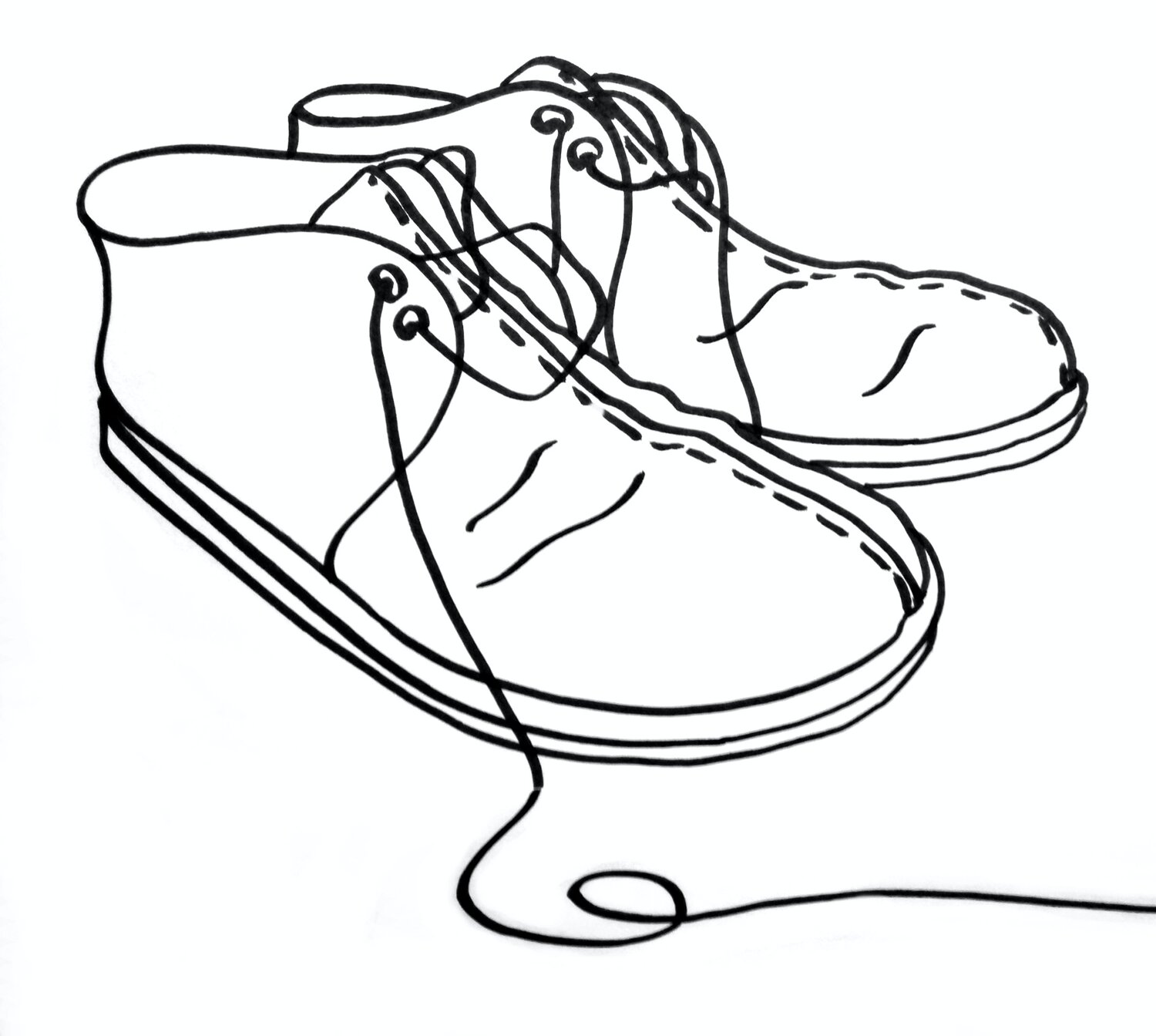
‘This is not a Shoe’ Workshop:
This set of teaching resources is an outcome of the ‘Affordances’ research project conducted by Dr Alexandra Sherlock, Dr Tassia Joannides and Pennie Jagiello in the School of Fashion & Textiles at RMIT. This workshop can be adapted and applied in a range of educational contexts. Resources include a step-by-step workshop guide and assessment rubric.
Shifting from design-led to material-driven design
Whatever kind of design you practice or teach, this activity can be used as an effective way to switch from a design-led to a material-driven mindset. Rather than finding materials to fit a pre-defined design idea (often a sketch inspired by design conventions or archetypes), a material-driven approach encourages designers to work in collaboration with materials; through a process of experimentation and play the materials guide a final design, concept or application. This approach lends itself to developing sustainable and circular design processes by reducing reliance on virgin materials and encouraging design for future re-use, repair or recycling.
Mindful consumption
Beyond a design context, this activity is also recommended to enhance mindful consumption practices. Through the deconstruction and reconstruction of old shoes, participants can increase their material literacy and empathy with materials. These skills enable them to see past conventional definitions of ‘waste’ to recognise the creative potential of even the most abject materials. Consequently, material disposal becomes a waste of potential - a frustrating dilemma resolved only by hoarding or consuming less.
Conditions of use
These resources are for all to use freely, we ask only that you credit the creators (Dr. Alexandra Sherlock, Dr. Tassia Joannides and Pennie Jagiello at RMIT) and provide feedback using the form below so that we can gauge impact.
You may also like to share outcomes on social media using #thisisnotashoe
-
This activity uses the deconstruction and reconstruction of used shoes to unlock a perception of matter and activate a sustainable ‘material-driven’ approach to design. More than just upcycling, the activity defamiliarises everyday objects, enabling even the most abject, invisible, redundant or mundane of materials and tools to become creative resources and pathways to innovation.
-
This activity can be done individually or as a group. Reflective notes and photographs are encouraged throughout. Virgin materials other than cotton thread should not be used (eg. tape or glue) and sketching should be avoided (unless for analysis).
-
Find a used pair of shoes ready for disposal.
If working in a group, re-distribute the shoes to generate random mis-matched pairs. Matching pairs can be used if working individually or to reduce the complexity of the activity.
Using a blindfold, analyse your shoes one at a time using any senses except sight. Try to forget their purpose, style or brand and note what they FEEL like (heavy, light, rough, smooth, hard, soft etc.). Can you feel any special features? Do they make a sound or have a smell?
Remove the blindfold, sketch and photograph the shoes.
-
Deconstruct your shoes using basic ready-to-hand tools, eg. scissors, craft knife, quick-unpicker or pliers. Consider what interventions they invite or permit, eg. unravel, unpick, pull-apart or cut. Using a ‘robotic’ approach, keep deconstructing and resist thinking about what the materials might become until you have generated a good collection of component parts.
Lay-out and photograph the resulting materials.
Reflect upon the deconstructive process to consider the following: What did you do and why? How did the shoes and materials respond? Did they cooperate with, or resist, your interventions?
-
Using the tools available to you, explore how your materials might now be reformed, joined or adapted to create new wearable forms. Allow the material qualities to guide your direction, maintaining a sensitivity to what the materials will or won’t let you do.
Use your own body in the context of its social, cultural and physical environment to explore your new forms, and to test wearability, composition and use. Reflect on what worked successfully, what didn’t work and what alternative strategies or techniques might be used to overcome the challenges you encountered.
Make as many artefacts or accessories as necessary to use ALL your materials.
-
To delve deeper into the theory that inspires this activity you may consider reading the following publications:
Barati, B. & Karana, E. (2019). Affordances as Materials Potential: What Design Can Do For Materials Development. Journal of Design, 13, 105-123.
Glăveanu, Vlad P. 2012. "What Can be Done with an Egg? Creativity, Material Objects, and the Theory of Affordances." Journal of Creative Behavior 46 (3):192-208.
Sherlock, Alexandra; Joannides, Tassia; Jagiello, Pennie, 2022. ‘The Affordances of Affordance Theory for Sustainable Fashion Design Pedagogy’, in: International Foundation for Fashion and Textile Institutions (IFFTI) Conference, Nottingham Trent University, Nottingham, 5-8 April 2022.
Sherlock, Alexandra, 2017. ‘This is Not a Shoe’: An Exploration of the Co-Constitutive Relationship Between Representations and Embodied Experiences of Shoes. PhD, University of Sheffield, UK.
-
Click here to download the assessment rubric for your own adaptation.
We recommend adapting criteria 3 and 4 to be built into any subsequent assessments to assist the further development of these sustainable design capabilities.
Featured image: Phillip Toole, 2021
Workshop Feedback
If you have used this activity please take a moment to provide feedback using the following prompts. Your feedback is invaluable and will help us gauge research impact and refine future versions of the activity.
Which aspects of the activity did you find most rewarding?
Which aspects of the activity need further development or adjustment?
Would you recommend the activity to others?
Any other comments or observations.
